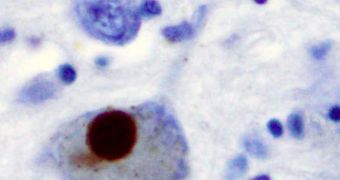For many years, clinicians and healthcare experts have been using deep brain stimulation (DBS) techniques to try an alleviate symptoms associated with Parkinson's disease. Now, a new consensus on how to do that was reached.
Experts pooled their resources together, and developed a series of guidelines and advices on how to use this approach for treating patients who do not respond well to treatment.
Parkinson's disease can cause people to lose control over their ability to move, can disrupt their balance and coordination, and can cause rigidity as well. The neurological disorder is unforgiving.
Until recently, DBS was not used on people who responded to treatment. For those that proved immune to drugs, the procedure was quite simple.
They would be placed in a Magnetic Resonance Imaging (MRI) machine, and then doctors would identify the areas of their brain in which neurons fired anomalous electrical signals.
When this happens, the uncontrolled motions that are a sign of the neurological disease develop. Experts would then insert small electrodes into those brain regions.
The devices would play a part in canceling the erroneous brain signals, by firing electrical signals of its own. The end result of this therapy was improving patients' quality of life, experts say.
But various experts used various approaches to DBS, as no consensus existed on what the best placement for electrodes is, or which type of patients make the best candidates for the procedure.
The new effort to develop such guidelines was undertaken by more than 50 neurologists, surgeons and clinicians, who were eventually able to reach a consensus.
“We know that very little accessible information is out there to help a Parkinson's patient make an informed decision as to whether he or she would be a good candidate for deep brain stimulation,” explains scientist Jeff Bronstein.
He is a professor of neurology at the University of California in Los Angeles (UCLA), and also the lead author of the new report.
The document is published in the current online edition of the esteemed medical journal Archives of Neurology. The meeting took place in April 2009.
Support for the consensus came from the Parkinson Alliance, the Davis Phinney Foundation, the National Parkinson's Disease Foundation, and the Lee Silverman Voice Treatment Foundation.

 14 DAY TRIAL //
14 DAY TRIAL //